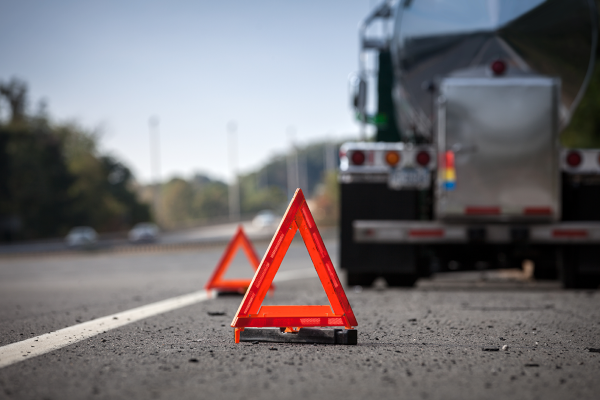MOVE OVER,
SLOW DOWN,
HELP SAVE LIVES!
There are over 500 fatalities and over 14,000 injuries involving a disabled vehicle every year in the United States.
Move Over Laws, enacted in all 50 states and every province, require motorists to change lanes and/or slow down when approaching a vehicle that is parked or otherwise stopped on a roadway.

67% of drivers are completely unaware of a Move Over Law in their own state.
42% of drivers who do not comply with Move Over Laws consider their non-compliance as only somewhat dangerous, or not dangerous at all.
More than half the deaths and almost 1 in 5 serious injuries occur when a vehicle strikes a pedestrian who is leaving, working on, or returning to a stopped vehicle. These accidents involve Tow Truck Drivers, Mobile Repair Services, Semi Drivers, Emergency Responders, and the general public.
While a majority of the trucking industry community understands the significance of Move Over Laws, a large percentage of the traveling public do not.
These numbers paint a grim picture for the industry we serve and the general public. TruckDown is committed to do our part to increase public awareness, and hopefully, make a significant impact on highway injuries and deaths all across North America.
- Bob Toews, TruckDown CEO
IF YOU SEE A DISABLED VEHICLE ON THE SIDE OF THE ROAD:

MOVE OVER
Move over to a lane farther away from the disabled vehicle if multiple lanes are available in the same direction of travel.

SLOW DOWN
If changing lanes is not possible or safe, reduce speed significantly below the posted limit when approaching the vehicle or individual.
HELP SAVE LIVES
By moving over and slowing down, you create a safety buffer and provide a safer environment for those on the roadside.IF YOU HAVE TO STOP ON THE SIDE OF THE ROAD, DO SO SAFELY!
Signal: Activate your turn signal to indicate that you're pulling over and preparing to stop.
Find a safe spot: Try to find a suitable location to pull over. Ideally, you want to find a wide shoulder or an emergency stopping area. If that's not possible, look for the nearest exit or rest area
Reduce speed gradually: Begin to slow down gradually and smoothly. Don't brake suddenly or make any abrupt maneuvers that could cause an accident.
Pull over completely: Once you've reached a safe spot, bring your vehicle to a complete stop. If possible, park your car as far away from moving traffic as you can. Turn on your hazard lights to make your vehicle more visible.
Exit your vehicle safely: Once you've stopped, check your surroundings before opening the door and exiting your vehicle. Watch out for oncoming traffic and only exit on the side away from traffic if possible.

Stay alert and visible: If you need to exit your vehicle, make sure you're visible to other drivers. Wear reflective clothing if available, especially at night or in low visibility conditions.
Seek assistance if needed: If you're unable to address the issue on your own, call for roadside assistance or emergency services. It's better to get professional help if you're unsure or unable to fix the problem yourself.
